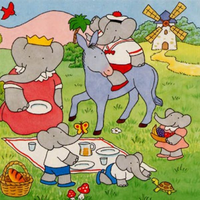- does trading among your own cities get you more resources, or are they simple transferred between cities?
- how much should I follow the recommendations for producing stuff? Sometimes it’s useful but it almost never tells me to produce a builder even though they seem kinda crucial
- how fast should I be expanding? Should I be starting cities as much and as quickly as possible?
- is it me, or is it very hard to trade favorably or even equally with non-human players? They never seem to be OK with trading one resource for another. They always want some gold too.
I’m only on my second game so far, so still figuring things out. Enjoying it a lot though!
I think the recommendations are just that. Maybe half the time they’re useful, trust your instincts on things like builders.
I personally expand in phases, not continually. I try to get at minimum 3 cities as quickly as safely possible. YMMV barbarian wise. Once I hit 3 I fortify a little, explore a little and build a builder to get going on refinements. I tend to go for scientific victory just fyi. Then when the three are humming along and I have some surplus military I start on the next 3-4 cities. This depends on terrain of course and those pesky neighbors.
Trading annoys me as I think you’ll come to see. The terms are lame and mostly the other leaders use it to build animosity towards you when you decline. The only good trades I ever get are when I’ve just destroyed them and waited 10 turns or so.
Got it, thanks for answering. That strategy with phases of expansion sounds interesting, I’m gonna give that a try.
Assuming you have GS and RF DLCs.
- trading earns food and production that isn’t taken away from the destination city.
- For builders do the recommended thing (edit to clarify: choose the resources you want and ignore the map icons, that just shows what is closest, but once you’re on the resource build the recommended thing that it says), for science researches and culture civics try to hit the inspirations where you can before researching, and with city production do whatever the hell you want, screw the recommendations.
- To build wide or to build tall are two different strategies. I think 4 cities is good for the tall strategy, lots of cities if wide but watch that your people are happy (aim to develop new kinds of luxury resources with your Builder units or trade ones you have extra with what your enemies have extra but you don’t have). Settling quickly is good, just don’t overextend lest you get screwed by barbarian or an AI or player who sees a good opportunity to war you.
- AI trading gives you more favourable trades when in a good relationship and terrible trades if they denounce you. Often times you can snag open borders for 1 coin even in neutral. The main thing you want to trade is spare luxury resource for spare luxury resource like I said.
I don’t have any of the DLCs, but when I play online with a friend they are enabled automatically it seems.
Thank you for the answers! I’m gonna try at some point to build tall. For now I’ve been founding lots of cities.
Started playing recently myself. At the start, recommendations have no idea what victory strategy you are pursing, and don’t get that much better at it. They do seem somewhat OK at recommending things that will solve particular problems that city has (slow growth, lack of amenities, etc), though maybe there are better ways available to you. Or, sometimes they notice that your city geography would support a particular wonder or give bonuses to a particular zone. So, if they recommend something that seems weird, maybe check to see if you are missing some mechanical concept. (VI has a lot of obscure interlocking mechanics that can be hard to see, particularly at first.)



